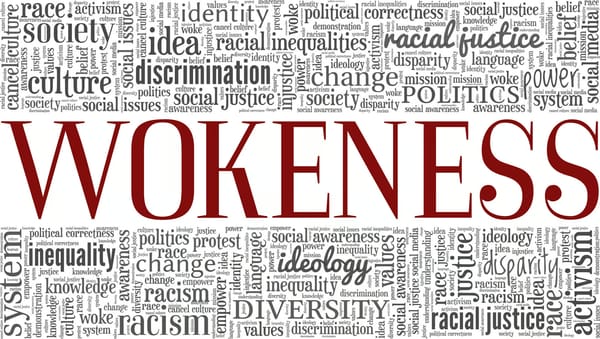Time for DEI to "DIE"?

Diversity, Equity, and Inclusion (DEI) started as a well-intentioned movement to create fairer workplaces and institutions. At its core, DEI aims to ensure representation, level the playing field, and foster a sense of belonging for marginalized groups. But as these initiatives have expanded, so too have the critiques.
While DEI’s goals remain admirable, its implementation has led to unintended consequences that raise critical questions. From concerns about meritocracy to claims of reverse discrimination (or simply put discrimination), some argue that the DEI movement is causing as many problems as it aims to solve. Let’s explore the darker side of DEI.
Lowering Standards and Meritocracy Concerns
One of the most common criticisms of DEI initiatives is the perception that they prioritize diversity over merit. Which can lead to under-qualified people in critical roles.
When Representation Trumps Qualifications
In an effort to meet diversity quotas, some organizations have reportedly hired candidates who lack the qualifications or experience typically required for their roles. While these hires may fulfill diversity goals, they can lead to:
- Decreased team performance when underqualified individuals struggle to meet expectations.
- Erosion of trust among employees who feel standards are being sacrificed.
- Resentment from colleagues who perceive such hires as undeserved or tokenistic.
Real-World Example:
In education, some schools have eliminated standardized testing to increase diversity in admissions. While this can broaden access, it has also sparked concerns about whether these changes undermine the rigor and competitiveness of the institutions. Some argue it’s like hamstringing talented students (regardless of race) so they regress back to the pack rather than being pushed by similarly talented peers.
Overrepresentation in Certain Areas
Another unintended consequence is overrepresentation in sectors where diversity initiatives are disproportionately focused. One example of unintended consequences in DEI initiatives can be observed in the trades, particularly plumbing. In an effort to increase diversity, some companies have reduced or eliminated grip strength requirements in their hiring processes.

This well-intentioned change has led to an unexpected outcome: male plumbers are often required to accompany female plumbers on jobs that demand greater physical strength, particularly those requiring a firmer grip.
The Risk of Imbalance
When DEI efforts concentrate on specific demographics, other groups can feel overlooked or excluded. This is particularly evident in industries where diversity metrics are used as benchmarks for success.
Consequences:
- Unbalanced hiring practices: Overemphasis on one group can lead to the underrepresentation of others, even if they are more qualified.
- Tokenism: Individuals from target demographics may feel they are hired as symbols rather than for their actual contributions, in some cases leading to “imposter syndrome”.
Question: How can we balance representation without tipping the scales too far in one direction?
Reverse Discrimination Claims
Critics argue that DEI initiatives can unintentionally create a form of reverse discrimination, where members of historically dominant groups are treated unfairly.
Creating New Inequities
Efforts to increase opportunities for underrepresented groups sometimes come at the expense of others, leading to claims of unfair treatment.
- White and Asian students have cited discrimination in university admissions processes, particularly at elite institutions where affirmative action policies are applied.
- Men in STEM fields report feeling marginalized in hiring processes designed to favor women.
While the intent is to level the playing field, such practices can alienate individuals who feel penalized for their identity, something they did not choose.
Polarization and Workplace Tensions
Instead of fostering unity, DEI initiatives can inadvertently create division, or worst yet, workplace tribalism.

An “Us vs. Them” Mentality
Mandatory diversity training and quotas can make employees feel singled out or judged based on their race, gender, or other identity markers.
Examples of Backlash:
- Workplace resentment: Employees may view DEI as an imposition rather than an improvement, leading to lower morale.
- Stereotyping: Ironically, some DEI practices reinforce stereotypes by categorizing individuals based on identity rather than individuality.
- Overemphasis on identity: A hyper-focus on diversity can overshadow other critical aspects of workplace culture, such as collaboration and shared goals.
DEI as a Bureaucratic Machine
As DEI has grown, so too has the infrastructure supporting it — consultants, workshops, audits, and specialized roles. Critics argue that DEI has become a bloated industry.
The DEI Industrial Complex
Instead of driving meaningful change, some initiatives seem designed to check boxes or protect organizations from legal or public relations risks.
Issues:
- Ineffectiveness: Expensive training sessions often fail to produce measurable improvements.
- Virtue signaling: Organizations may adopt DEI policies for appearances rather than genuine commitment to change.
- Overcomplication: A simple mission — fairness and inclusion — has been buried under layers of jargon and bureaucracy.
Fact: A 2022 study published in Harvard Business Review found that many diversity trainings have no lasting impact on workplace behavior.
Fostering a Culture of Fear
Another unintended consequence is the creation of a climate where individuals fear speaking candidly.
Stifling Honest Conversations
When DEI efforts prioritize avoiding offense at all costs, open dialogue can suffer. Employees often feel:
- Afraid to voice opinions that deviate from the prevailing narrative.
- Uncertain about boundaries, leading to self-censorship.
- Overly cautious in interactions, hindering genuine relationships.
The Irony:
The very initiatives meant to encourage inclusion can inadvertently suppress diverse viewpoints.
Can DEI Be Salvaged?
Critics don’t always call for DEI’s abolition; many suggest reforming the movement to address its flaws.
Recommendations for a Better Approach:
- Focus on skills and qualifications: Prioritize merit while still encouraging diverse hiring practices.
- Avoid quotas: Instead of hard targets, aim for diversity through broader outreach and inclusive policies.
- Promote genuine dialogue: Create spaces where all employees can share perspectives without fear of judgment.
- Measure outcomes: Shift from symbolic gestures to initiatives with tangible, measurable results.
Conclusion: A Time for Reflection
The goals of DEI — diversity, equity, and inclusion — are undeniably important. But as the movement has grown, so have its unintended consequences. From claims of reverse discrimination to concerns about meritocracy and workplace division, the flaws in DEI’s current implementation are hard to ignore.
Does this mean DEI should die? I think so, but at the very least, it might be time to rethink how it’s done, focusing less on optics and more on genuine, balanced progress.
BONUS CONTENT
This is not a critique of Congresswoman Crockett, but I recently watched her comments on the ‘Dismantle DEI’ Act proposed by Rep. Michael Cloud (R-TX). While I won’t delve into the flaws in her data or her questionable metaphor — she seems to have a sweet tooth — there’s an important point to consider. When a Black person pronounces “ask” as “axe” or “escape” as “ekscape,” it’s critical to remember that they DO NOT represent the views of black folks at large, regardless of their title or “edge-u-mah-kation”.
What do you think? Are DEI initiatives helping or hurting? Share your thoughts below — diverse perspectives are always welcome.





